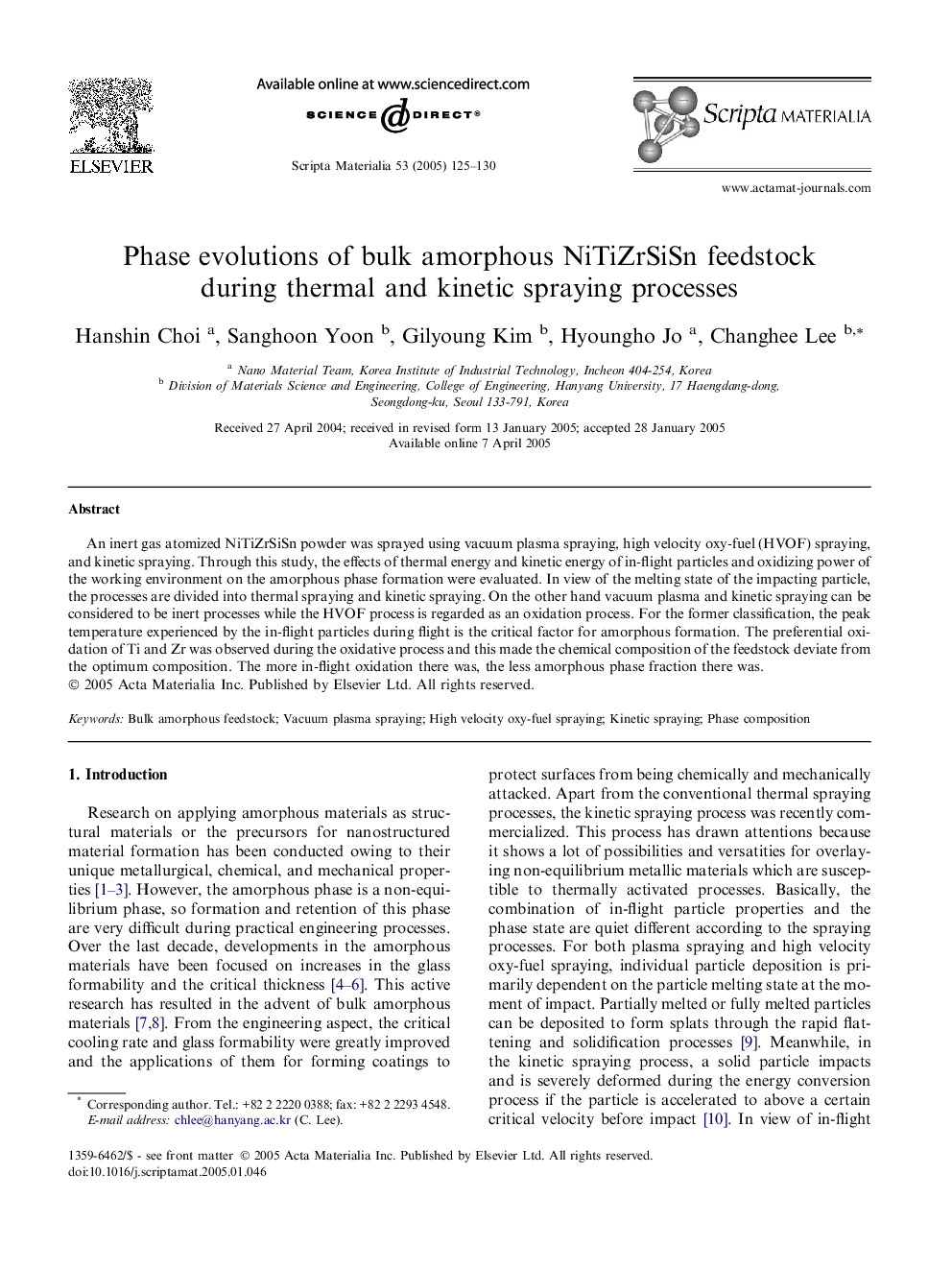| Article ID | Journal | Published Year | Pages | File Type |
|---|---|---|---|---|
| 10634373 | Scripta Materialia | 2005 | 6 Pages |
Abstract
An inert gas atomized NiTiZrSiSn powder was sprayed using vacuum plasma spraying, high velocity oxy-fuel (HVOF) spraying, and kinetic spraying. Through this study, the effects of thermal energy and kinetic energy of in-flight particles and oxidizing power of the working environment on the amorphous phase formation were evaluated. In view of the melting state of the impacting particle, the processes are divided into thermal spraying and kinetic spraying. On the other hand vacuum plasma and kinetic spraying can be considered to be inert processes while the HVOF process is regarded as an oxidation process. For the former classification, the peak temperature experienced by the in-flight particles during flight is the critical factor for amorphous formation. The preferential oxidation of Ti and Zr was observed during the oxidative process and this made the chemical composition of the feedstock deviate from the optimum composition. The more in-flight oxidation there was, the less amorphous phase fraction there was.
Related Topics
Physical Sciences and Engineering
Materials Science
Ceramics and Composites
Authors
Hanshin Choi, Sanghoon Yoon, Gilyoung Kim, Hyoungho Jo, Changhee Lee,
